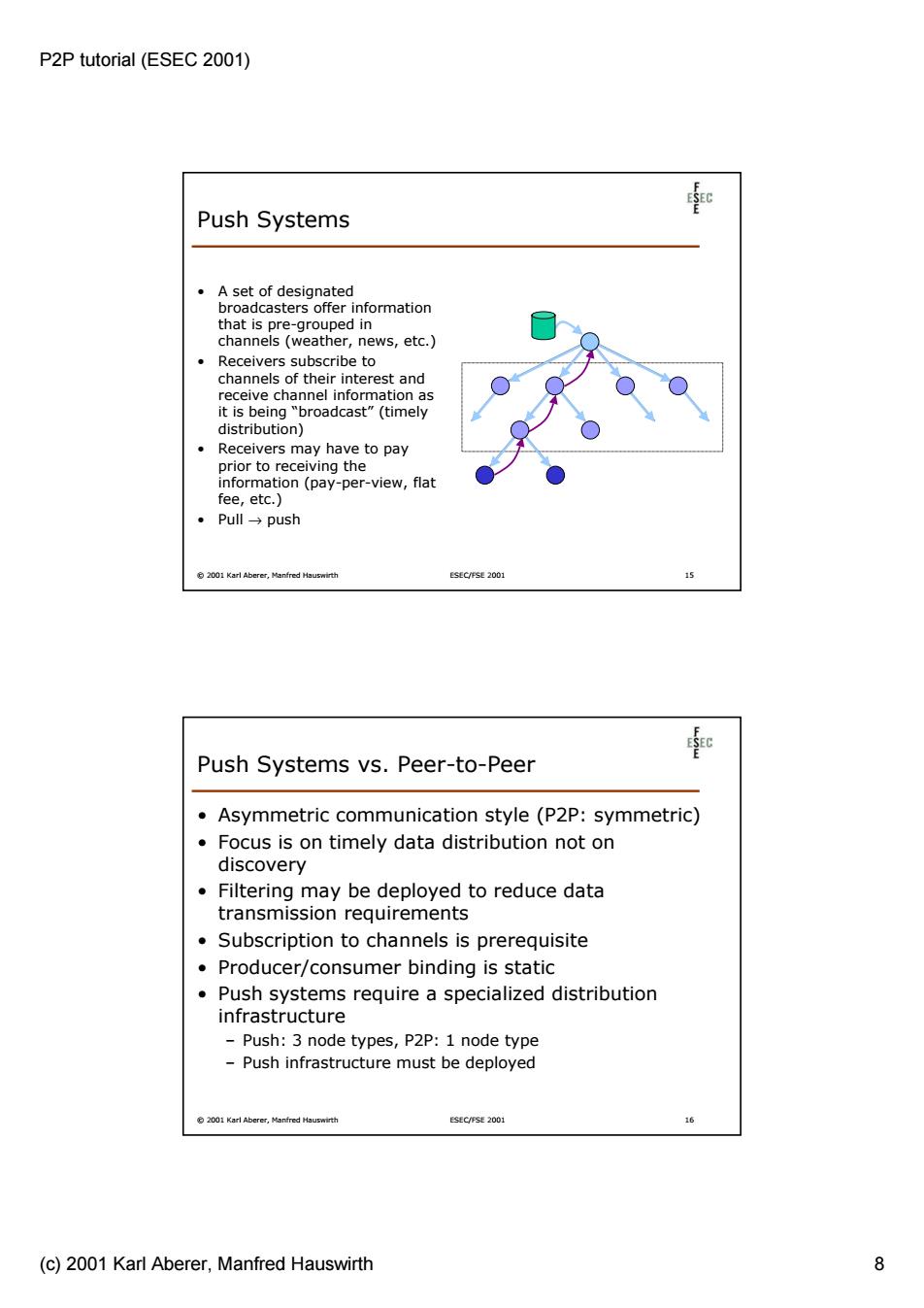正在加载图片...

P2P tutorial (ESEC 2001) 和 Push Systems ·,A set of designated broadcasters offer information that is pre-grouped in channels (weather,news,etc. Receivers subscribe to channels of their interest and receive channel information as it is being "broadcast"(timely distribution) Receivers may have to pay prior to receiving the information(pay-per-view,flat fee,etc.) 。 Pull→push 82001 Karl Aberer,Manfred Hauswirth ESEC/FSE 2001 15 Push Systems vs.Peer-to-Peer Asymmetric communication style (P2P:symmetric) Focus is on timely data distribution not on discovery Filtering may be deployed to reduce data transmission requirements Subscription to channels is prerequisite Producer/consumer binding is static Push systems require a specialized distribution infrastructure -Push:3 node types,P2P:1 node type -Push infrastructure must be deployed 2001 Karl Aberer,Manfred Hauswirth ESEC/FSE 2001 16 (c)2001 Karl Aberer,Manfred Hauswirth 8P2P tutorial (ESEC 2001) (c) 2001 Karl Aberer, Manfred Hauswirth 8 © 2001 Karl Aberer, Manfred Hauswirth ESEC/FSE 2001 15 Push Systems • A set of designated broadcasters offer information that is pre-grouped in channels (weather, news, etc.) • Receivers subscribe to channels of their interest and receive channel information as it is being “broadcast” (timely distribution) • Receivers may have to pay prior to receiving the information (pay-per-view, flat fee, etc.) • Pull → push © 2001 Karl Aberer, Manfred Hauswirth ESEC/FSE 2001 16 Push Systems vs. Peer-to-Peer • Asymmetric communication style (P2P: symmetric) • Focus is on timely data distribution not on discovery • Filtering may be deployed to reduce data transmission requirements • Subscription to channels is prerequisite • Producer/consumer binding is static • Push systems require a specialized distribution infrastructure – Push: 3 node types, P2P: 1 node type – Push infrastructure must be deployed